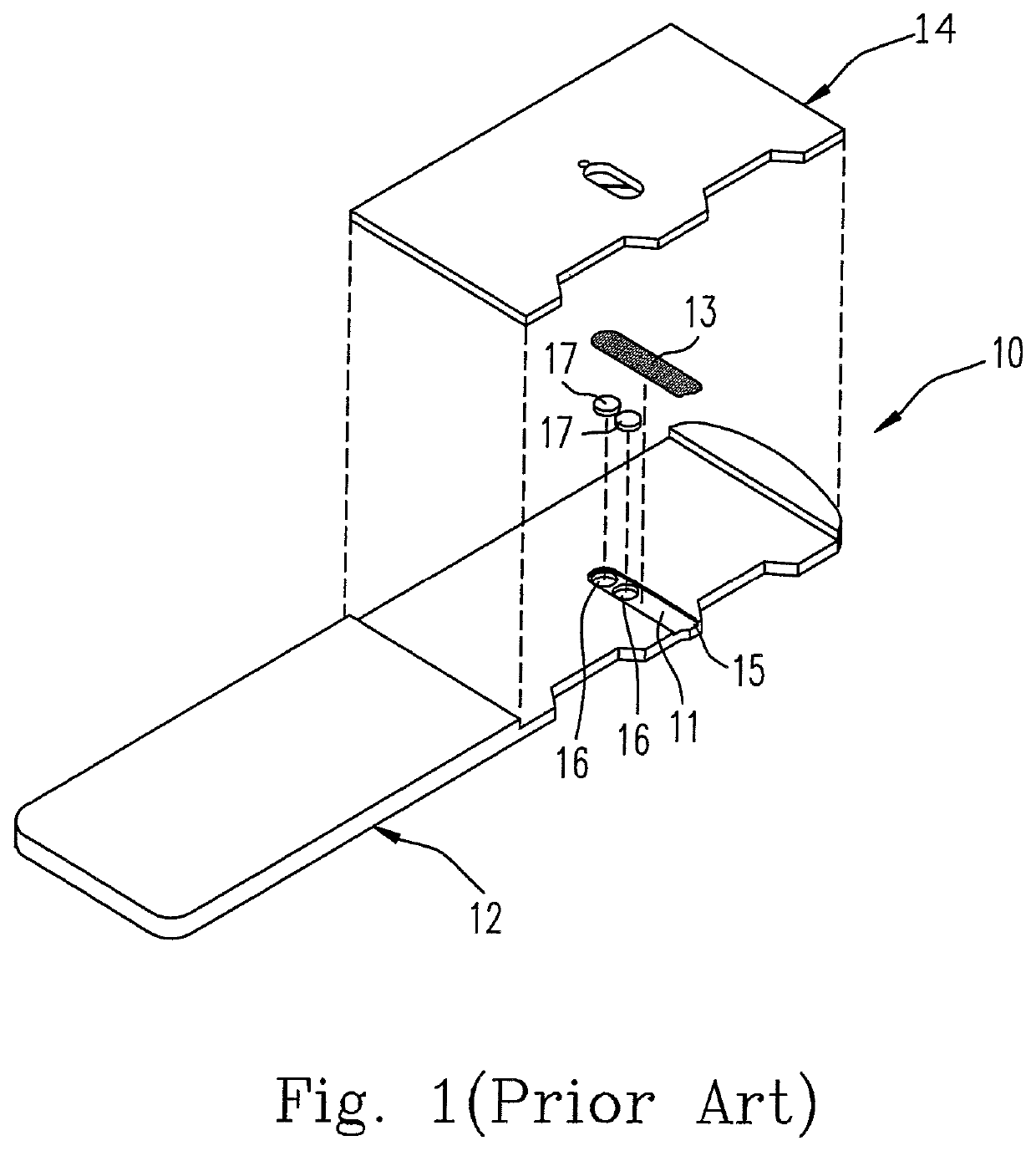Biosensor strip
a biosensor and strip technology, applied in the field of biosensor strips, can solve the problems of reducing the volume of the sample fluid and the required sample fluid, and achieve the effects of reducing the usage of noble metals, reducing the required volume, and reducing the cos
- Summary
- Abstract
- Description
- Claims
- Application Information
AI Technical Summary
Benefits of technology
Problems solved by technology
Method used
Image
Examples
embodiment 1
[0044]2. The biosensor strip , wherein the conductive portion is formed on the substrate, and the partial wall is one of a partial portion and an entire portion of the conductive portion, which is electrically insulated from the partial wall surrounding the electrode hole, and used to dispose the working electrode.
[0045]3. The biosensor strip according to Embodiments 1-2, wherein the partial wall defines the reaction channel, is one of a partial portion and an entire portion of the conductive portion, which is located at the position of the cover plate and electrically insulated from the relative position of the electrode hole after the working electrode is disposed.
[0046]4. The biosensor strip according to Embodiments 1-3, wherein the cover plate of the strip body includes a vent communicating with the reaction channel.
[0047]5. The biosensor strip according to Embodiments 1-4, wherein the conductive portion is made of one selected from a group consisting of a carbonaceous material,...
embodiment 8
[0051]9. The biosensor strip , wherein the conductive strip body further includes a substrate and the cover plate is assembled on the substrate
[0052]10. The biosensor strip according to Embodiments 8-9, wherein the conductive strip body further includes a conductive portion having a surface layer and being integrally formed on at least one of the substrate and the cover plate, and the reaction channel is defined by the substrate and the cover plate, wherein a partial wall forming the reaction channel is one of a partial portion and an entire portion of the surface layer of the conductive portion corresponding to the reaction channel, the conductive portion has an electronic response surface, and a first signal output surface different from the electronic response surface, and the reaction channel has an opening receiving the sample fluid, and an electrode hole.
[0053]11. The biosensor strip according to Embodiments 8-10, wherein the working electrode has an electrode acting surface c...
embodiment 14
[0057]15. The biosensor strip , wherein the strip body further includes a substrate and the conductive cover plate is assembled on the substrate
[0058]16. The biosensor strip according to Embodiments 14-15, wherein the conductive cover plate further includes a conductive portion having a surface layer and being integrally formed on at least one of the substrate and the conductive cover plate, and the reaction channel is defined by the substrate and the conductive cover plate, wherein a partial wall forming the reaction channel is one of a partial portion and an entire portion of the surface layer of the conductive portion corresponding to the reaction channel, the conductive portion has an electronic response surface, and a first signal output surface different from the electronic response surface, and the reaction channel has an opening receiving the sample fluid, and an electrode hole.
[0059]17. The biosensor strip according to Embodiments 14-16, wherein the working electrode has an...
PUM
| Property | Measurement | Unit |
|---|---|---|
| volume | aaaaa | aaaaa |
| height | aaaaa | aaaaa |
| width | aaaaa | aaaaa |
Abstract
Description
Claims
Application Information
 Login to View More
Login to View More - R&D
- Intellectual Property
- Life Sciences
- Materials
- Tech Scout
- Unparalleled Data Quality
- Higher Quality Content
- 60% Fewer Hallucinations
Browse by: Latest US Patents, China's latest patents, Technical Efficacy Thesaurus, Application Domain, Technology Topic, Popular Technical Reports.
© 2025 PatSnap. All rights reserved.Legal|Privacy policy|Modern Slavery Act Transparency Statement|Sitemap|About US| Contact US: help@patsnap.com



